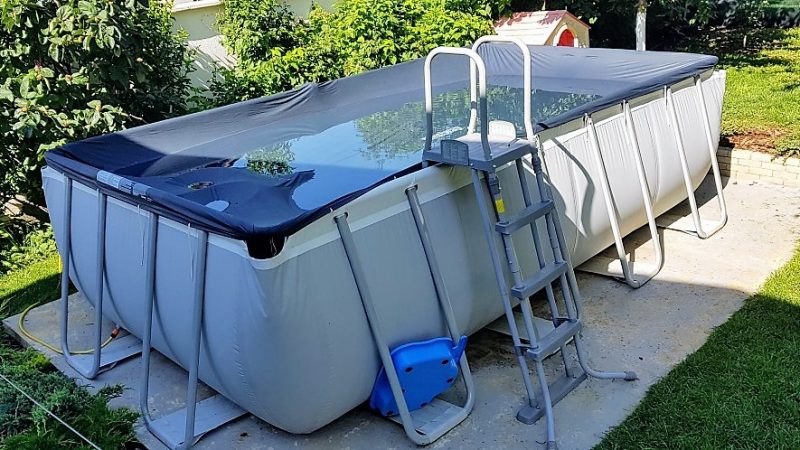A backyard swimming pool can be a great place to take a refreshing dip on a summer’s day. It can also be a place to freeze your giblets off if the sun has been hiding for even a few hours. That can make pools an iffy proposition unless they’re heated, and that starts to get really expensive in terms of upfront costs and ongoing charges for fuel or power. Unless you put the sun and the IoT to work for pool-heating needs.
Preferences vary, of course, but [Martin Harizanov] and his family clearly like their swims on the warm side. With nobody using the pool when it was below 25°C (77°F), [Martin] picked up a few bits to harness the sun to warm the water. Loops of PVC lawn irrigation tubing were tossed onto a shed roof with a favorable solar aspect and connected to the pool with a length of garden hose. The black thin-wall tubing is perfect for capturing the sun’s energy, and 200 meters of the stuff can really heat things up fast. A small pump is controlled by a microcontroller — it’s not explicitly stated but we suspect it’s a Raspberry Pi — with a pair of temperature sensors to sample the water in the pool and in the heating loop. Metrics are gathered and logged by Emoncms, an open source energy monitoring app. [Martin] says he’s harvesting about 10 kW from the sun on a good day, and that the pool water in the heating loop has gotten up to a steamy 55°C (131°F) without any other energy inputs other than the pump.
Plenty of others have made the leap to solar for pool season extension, with designs from the simple to the more complex. And if you live where the sun doesn’t shine, there’s always a compost water heater.
















Although a better term for this at my place is LAN of things, or maybe just home automation, I do the same sorts of stuff, but it never gets near the internet – no point in the attack surface and in general, no need for remote control or monitoring past my own homestead (4 buildings habitable). I AM a little jealous of the pool..I do different things here, including yes, heating and cooling the habitable spaces. Control rain gathering, purification, transfer, solar power system and so on. I use a mix of pies (is that right for plural?) and arduinos – a couple unos but mostly now ESP variants for time-critical but simple stuff a pi doesn’t handle well – think engine control module for a backup generator..
Bonus points if you can also use the pool as a solar reservoir to help keep the house warm on cool nights in spring and autumn.
Paint black, clear cover, great collector; poor storage.
I wonder if a fluidyne engine would work well for such a setup…
Get it a little hotter and do sous vide on a whole hog!
I think the article misleads a bit, the water in the pipe gets up to 55*C, but the pool can never reach 55*C..
Sorry about that. Corrected in the article.
I’m thinking that above ground pool could catch a little extra heat with the addition of a simple black fabric curtain around the walls, held on with elastic or velcro.
Most of the pool heaters can be set up on any flat surface.
Is the author not versed in technicalities of engineering/know how energy is measured?
“[Martin] says he’s harvesting about 10 kW from the sun on a good day”
kW is a measure of instantaneous power, so saying you harvest 10kW a day makes no sense whatsoever. The correct units are kWh/day. So is it 10kWh/day or what?